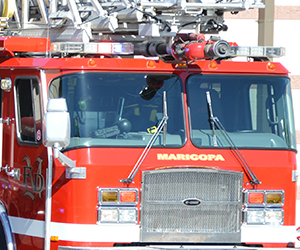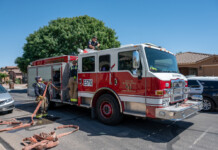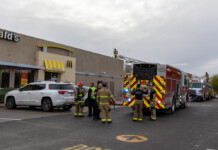As temperatures begin to move into the extremes, Maricopa Fire Department reminds you prolonged or intense exposure to hot temperatures can cause heat-related illnesses such as heat exhaustion, heat cramps and heat stroke. Hydration and access to air conditioning and/or shade are necessary to avoid medical emergencies. Children, elderly and pets left in automobiles are particularly vulnerable.
• Heat stroke, the most serious form of heat-related illness, happens when the body becomes unable to regulate its core temperature. Sweating stops and the body can no longer rid itself of excess heat. Signs include confusion, loss of consciousness and seizures. Heat stroke is a medical emergency that may result in death. Call 911 immediately.
• Heat exhaustion is the body’s response to loss of water and salt from heavy sweating. Signs include headache, nausea, dizziness, weakness, irritability, thirst and heavy sweating.
• Heat syncope (fainting) results from low blood pressure when heat causes the blood vessels to expand (dilate) and body fluids move into the legs because of gravity.
• Heat tetany (hyperventilation and heat stress) is usually caused by short periods of stress in a hot environment.
• Heat edema is swelling in the legs and hands, which can occur when you sit or stand for long periods of time in a hot environment.
• Heat cramps are caused by the loss of body salts and fluid during sweating. Low salt levels in muscles cause painful cramps. Tired muscles – those used for performing the work – are usually the ones most affected by cramps. Cramps may occur during or after working hours.
• Heat rash, also known as prickly heat, is skin irritation caused by sweat that does not evaporate from the skin. Heat rash is the most common problem in hot work environments.
If you feel you are experiencing a heat-related emergency, call 911 and immediately get into some shade or air conditioning.

















![Shred-A-Thon to take place tomorrow An image of shredded paper. [Pixabay]](https://www.inmaricopa.com/wp-content/uploads/2024/03/shredded-paper-168650_1280-100x70.jpg)
